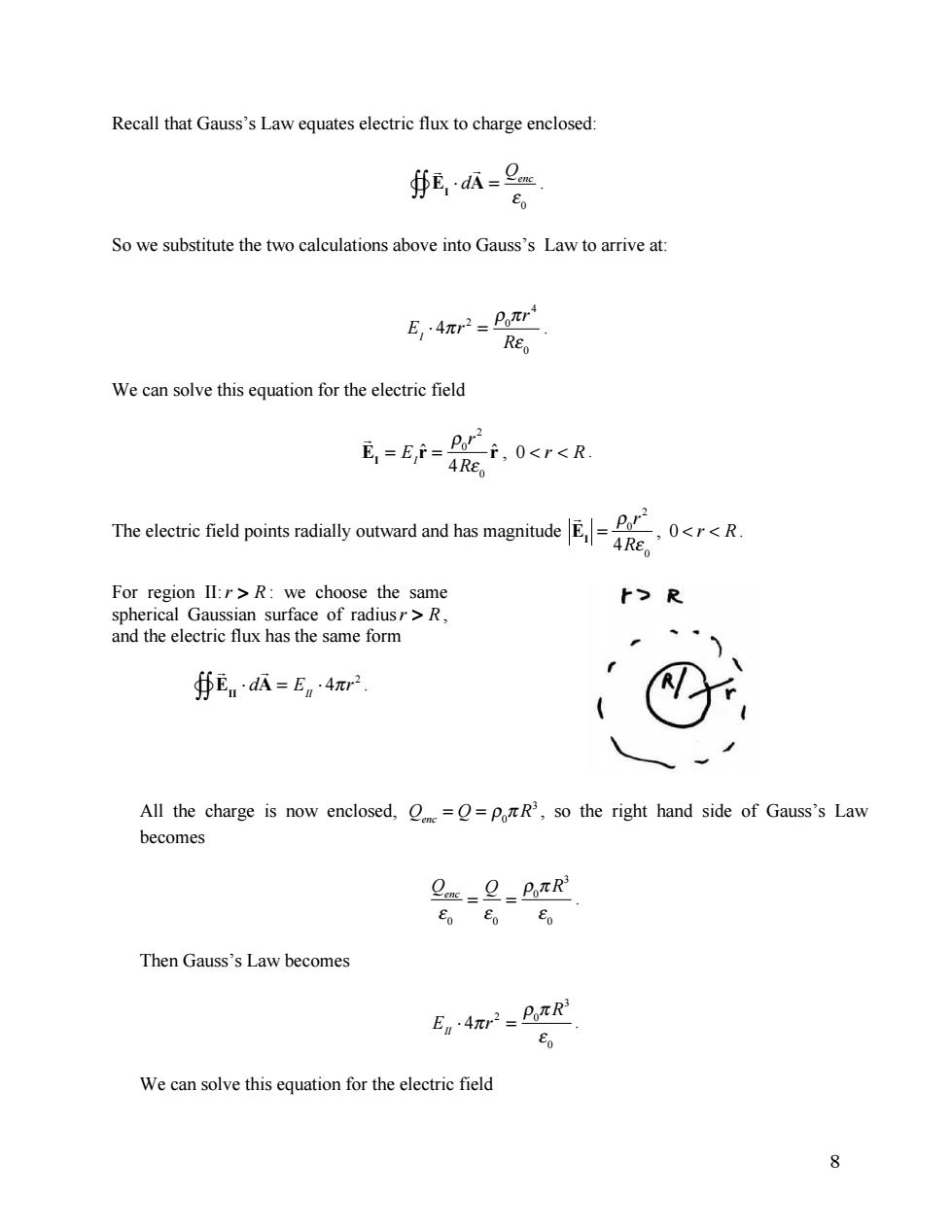正在加载图片...

Recall that Gauss's Law equates electric flux to charge enclosed: ∯E,dA= Eo So we substitute the two calculations above into Gauss's Law to arrive at: E,·4πr2=Pr REo We can solve this equation for the electric field Bi-F 05r<R 4REo The electric field points radially outward and has magnitudeR For region II:r>R:we choose the same r>R spherical Gaussian surface of radiusr>R, and the electric flux has the same form ∯Ed瓜=En4πr2. All the charge is now enclosed,==PoR,so the right hand side of Gauss's Law becomes g-旦_PπR EoEo Eo Then Gauss's Law becomes En·4πr2=PπR We can solve this equation for the electric field 88 Recall that Gauss’s Law equates electric flux to charge enclosed: ! EI ! d ! """ A = Qenc # 0 . So we substitute the two calculations above into Gauss’s Law to arrive at: EI ! 4"r 2 = #0 "r 4 R$ 0 . We can solve this equation for the electric field ! EI = EI rˆ = !0 r 2 4R" 0 rˆ , 0 < r < R . The electric field points radially outward and has magnitude ! EI = !0 r 2 4R" 0 , 0 < r < R . For region II:r > R : we choose the same spherical Gaussian surface of radiusr > R , and the electric flux has the same form ! EII ! d ! """ A = EII ! 4#r 2 . All the charge is now enclosed, Qenc = Q = !0 " R3 , so the right hand side of Gauss’s Law becomes Qenc ! 0 = Q ! 0 = "0 # R3 ! 0 . Then Gauss’s Law becomes EII ! 4"r 2 = #0 " R3 $ 0 . We can solve this equation for the electric field